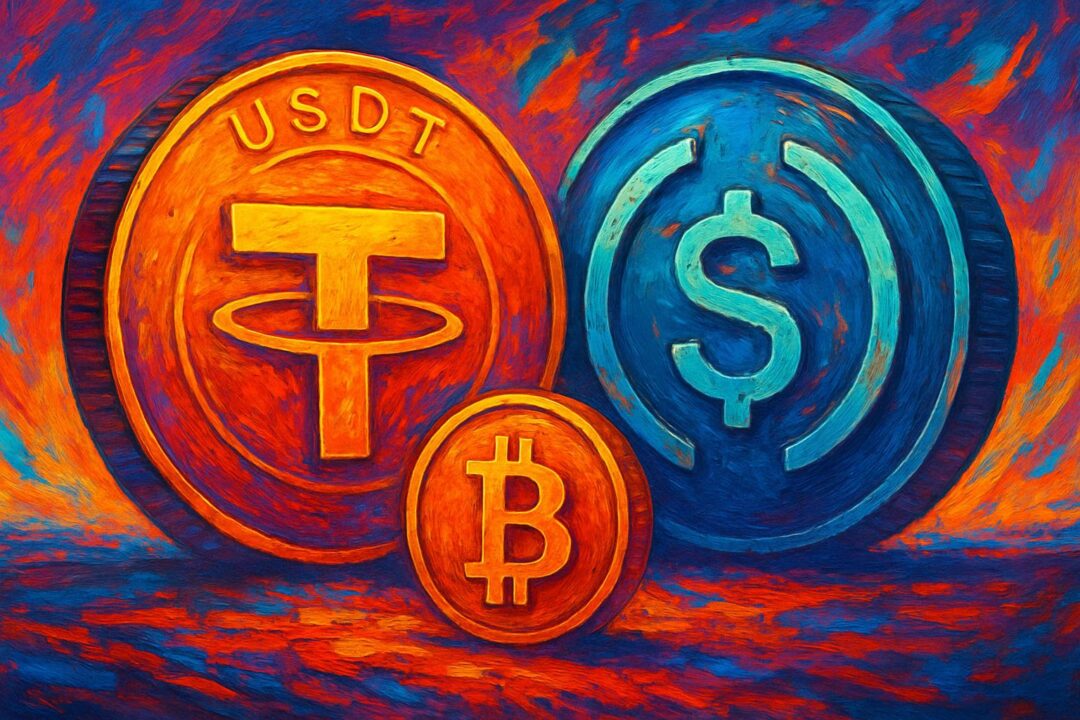When most people imagine a crypto-powered future, they picture something dramatic: a world where banks are obsolete, everyone holds their own keys, and money flows freely across borders with no middlemen. But that’s not how this ends.
Instead, the real crypto revolution—the one that actually wins—is going to be quiet, invisible, and completely absorbed into the existing financial system.
No flashy decentralization. No ideological showdown. Just faster dollars, powered by blockchains you’ll never see, integrated into the apps and banks you already use.
At the center of this shift are US Treasury–backed stablecoins: digital dollars pegged to the US government’s most trusted asset. They’re efficient, yield-generating, programmable—and perfectly suited to be the backbone of a modern monetary system.
But here’s the twist: regular people won’t self-custody them. They won’t even know they’re using them. And the biggest benefits? They won’t go to consumers. They’ll go to the platforms and institutions that plug these coins into their payment rails.
This is the quiet takeover of money. Not by crypto anarchists—but by big tech, banks, and fintechs. And it’s already happening.
1. The Rise of Treasury-Backed Stablecoins
Stablecoins are digital assets pegged to fiat currencies like the US dollar. The most credible of these are backed by short-term US Treasuries, offering both stability and yield. From a technical and financial standpoint, they’re nearly ideal: programmable, instantly transferable, globally accessible, and backed by the most trusted government debt in the world.
One of the most prominent examples is USDC, issued by Circle—a regulated financial company that maintains full-reserve backing and regularly discloses its holdings. USDC has become the go-to stablecoin for institutions and fintechs looking to build on-chain without touching the chaos of crypto speculation.
As regulators get more involved and traditional financial institutions enter the space, the next wave of stablecoins won’t be offshore experiments—they’ll be issued or integrated by established players like Circle, PayPal, Stripe, and potentially even central banks themselves. These assets will be fully compliant, deeply liquid, and embedded into the very fabric of the financial system.
And critically: most users won’t know—or care—that they’re using one.
2. Self-Custody Is Not for the Masses—Especially in the West
Despite crypto’s philosophical roots in self-sovereignty, self-custody has never appealed to the majority of users—and never will. Managing private keys, using seed phrases, navigating complex wallet interfaces, and worrying about irreversible mistakes are simply too much for most people.
In the Western world, where financial systems are (relatively) stable, insured, and familiar, the need to self-custody digital dollars is almost nonexistent. People trust their banks and payment apps. They want convenience, customer service, and recourse—not autonomy and responsibility over their own cryptographic keys.
There is no meaningful incentive for the average consumer to hold stablecoins in a non-custodial wallet. Most won’t even know it’s possible. The slight theoretical gains (e.g., earning direct yield, having 24/7 access) don’t outweigh the risks or complexity for the vast majority of users.
Developing countries may be the exception. In places with currency volatility, capital controls, or untrustworthy banks, self-custody of stablecoins could offer real empowerment. That’s where the ideological promise of crypto may still take root. But in the US, UK, EU, and similar markets, stablecoins will mostly exist behind the scenes.
3. Big Tech and Banks Will Own the On-Ramps
As stablecoins go mainstream, it won’t be through Metamask or hardware wallets. It’ll be through integrations with:
- Big tech platforms (Apple, Google, Amazon)
- Fintech apps (Cash App, Venmo, Revolut)
- Banks and credit unions
- Payment processors (Visa, Mastercard, Stripe)
These players already own the user interface of money. They’ll abstract the blockchain layer and simply say: “Now with instant global transfers” or “Earn yield on your balance.” The stablecoin is just the backend upgrade powering a faster, cheaper, programmable form of USD.
4. The Yield Capture Problem
One of the key value propositions of Treasury-backed stablecoins is that they earn yield—often 4–5%—by holding US government debt. But here’s the catch: those savings won’t be passed on to users.
Instead, platforms will pocket the yield. It becomes a new revenue stream for banks, fintechs, and big tech firms. The same way banks don’t pass on all interest from savings accounts, stablecoin issuers and custodians will hoard most of the upside.
This means that while the infrastructure becomes more efficient, consumers likely won’t see cheaper remittances, higher interest, or dramatically better services. The margins will be captured by intermediaries.
5. A “Crypto” Future Without Crypto Principles
Ironically, the world could end up running on crypto infrastructure—blockchains, stablecoins, smart contracts—without any of the ideological wins.
No decentralization.
No privacy.
No permissionless finance.
No individual empowerment.
Just faster dollars, controlled by the same gatekeepers as before—except now they’re earning 5% yield on your behalf.
This is the great paradox: stablecoins may succeed precisely because the crypto layer becomes invisible. The average person will benefit from speed and efficiency, but won’t touch a wallet, private key, or blockchain explorer. It will feel like magic—and magic, by design, hides the mechanism.
6. Is This Good or Bad?
That depends on your lens.
From a techno-capitalist view, this is a massive win: financial rails become faster, more efficient, and more global. Cross-border payments get streamlined. Settlement is instant. Fraud is harder. Friction is lower. Capital flows more freely. It’s a net productivity gain.
From a crypto purist view, it’s a betrayal. The dream wasn’t just to modernize money—it was to democratize it. A world of custodial stablecoins powering closed platforms feels less like a revolution and more like a re-skinning of the old system.
For Western consumers, the experience may not change much. Your bank app might feel snappier. Your transfers may be faster. But the economic upside won’t trickle down. The real winners will be the platforms that own the pipes.
In emerging markets, though, stablecoins and self-custody may still have real teeth. If local currency is melting and banks can’t be trusted, a smartphone wallet holding tokenized dollars is a genuine lifeline. That’s where the ideological revolution could survive.
Conclusion: The Invisible Crypto Takeover
Stablecoins won’t take over the world through DeFi protocols and anonymous wallets. They’ll take over by becoming invisible infrastructure, embedded in the tools we already use. And the companies that control those tools will absorb most of the benefits.
We may very well end up in a world where every transaction settles on-chain and every dollar is tokenized—without most people ever knowing, or caring, that they’re using crypto.
The blockchain revolution might win. But don’t expect a parade.
Discover more from Brin Wilson...
Subscribe to get the latest posts sent to your email.



